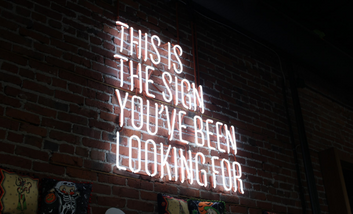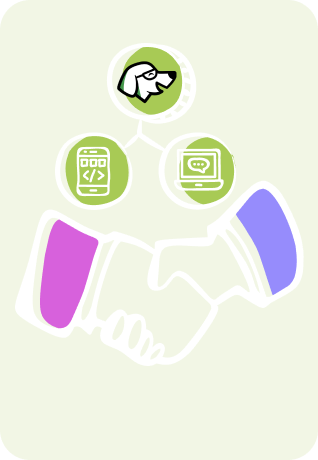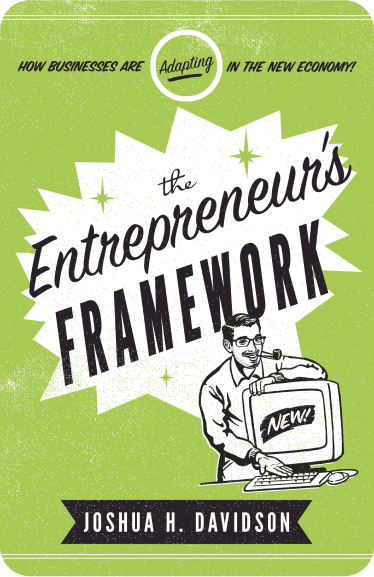This week, Meta launched its Twitter competitor app Threads. According to Mark Zuckerberg, in just two days, about 30 million people joined.
This includes a mix of everyday people, journalists, celebrities, creatives, and high-profile public figures. As of Thursday morning, Threads was the top free app on the Apple Store.
Why is Meta launching this and could it really replace Twitter?
Let’s take a look!
What Exactly is Threads?
Threads is a text-based social media platform that looks a lot like Twitter.
Twitter is actually threatening to sue Meta. They claim that after a number of mass firings, Meta poached those employees and used them to build a Twitter replica.
After firing half of Twitter’s staff, Elon Musk snarked on the site that he would like to “apologize for firing these geniuses” and that “their immense talent will no doubt be of great use elsewhere,”
Now he has a different perspective. According to Elon Musk’s lawyer:
Based on recent reports regarding your recently launched ‘Threads’ app, Twitter has serious concerns that Meta Platforms (‘Meta’) has engaged in systematic, willful, and unlawful misappropriation of Twitter’s trade secrets and other intellectual property.
Meta denies this. Some things do separate it from Twitter. Users can post photos and videos, as well as text posts with a 500 character limit.
It also borrows from Instagram’s current aesthetics and navigation systems. Users of other Meta products can sign on using existing information. They can share Threads posts directly to their Instagram Stories too.
Some downsides of threads are that users are experiencing glitches. Also, there is currently no way to delete your Threads account unless you also delete your Instagram account.
In addition, Meta has a history of unevenly applied censorship rules and nightmarish algorithmic failures. Many do not trust them to man a site that is supposed to enable open conversation and expression.
It’s simply bad for everyone when one company owns and controls all of the ways we can communicate.
Is Twitter Actually In Decline?
Recently, in a blog post, we covered several companies hoping to compete with Twitter. Many are saying that Twitter is essentially a sinking ship and we all should jump.
However, public opinion in the US does not always match up with the numbers globally. For example, people have been producing think pieces about the death of Snapchat for years. Meanwhile, its user base was still active and growing.
However, when it comes to Twitter, the general consensus is correct. Internal documents show that the site was struggling to keep its previously most active users engaged for a long time. This was true before Elon Musk even bought it.
Twitter had not been ‘virtual town square,’ as Elon Musk had called it, for a long time. Gradually most discourse relating to news and culture had died out. This was largely replaced by users talking about cryptocurrency and seeking porn.
There was also a widespread issue with the distribution of explicit material involving children.
Twitter After Elon Musk
Since Elon Musk’s takeover, the general opinion of the site has plummeted. Many online personalities, real-life celebrities, companies, and organizations have left entirely.
According to Vox:
If you’re on Twitter today, you’re likely experiencing an app that is more frequently broken, more random, and more unhinged. The site has seen a sustained uptick in outages and bugs. Many users are complaining about seeing more content in the new For You feed that they don’t want to see. There are active neo-Nazis on the platform. And just this week, NPR and PBS, two major news outlets with over 10 million combined followers, stopped using the platform, saying they had lost faith in Musk’s decision-making after he slapped a “government-funded media” label on the accounts.
Due to Musk continuing to platform controversial far-right political content and actors, many of Twitter’s advertisers have also bailed.
Most companies do not want to be associated with any political extremism, regardless of what the leadership believes personally. This is fundamental to brand strategy.
What we are left with is a site that does not function very well. Many advertisers and users feel it is not safe to use for business or for fun also.
All of this makes a lot of sense, as one of Musk’s first actions at Twitter was to fire over half of the staff. With the current skeleton crew at Twitter, it is likely impossible to maintain the site.
This has caused a number of conspiracy theories to spread. Some feel that Elon may be intentionally trying to destroy his own social media site. Some think the platform itself might cease to exist.
Can Threads Really Replace Twitter?
Many people have expressed the desire for a new platform, but this is fairly common amongst social media users.
For example, after Meta’s Cambridge Analytica Scandal became public many users threatened to leave. Some likely did, but it didn’t really do anything long-term to stop Meta from having the most used social platforms on the planet.
While some more savvy internet users might reject moving to another Meta-owned platform, most users don’t really care about the ins and outs of the companies behind the platforms they use. They just want to connect with whatever they care about on a platform that actually works.
Meta has one big advantage when it comes to building a Twitter competitor. As a company, they already have basically the largest user base in the Western world. On Instagram alone, they have over 2 billion active users.
Currently, Twitter has only 250 million active users. If a fraction of Instagram users alone join Threads, it will easily overtake it.
“It’ll take some time, but I think there should be a public conversations app with 1 billion+ people on it,” Zuckerberg said in a Threads post. “Twitter has had the opportunity do this but hasn’t nailed it. Hopefully we will.”
Another big pro on Meta’s side is the ease of joining Threads. If you have an Instagram account you can join instantly. That’s 2 billion people with almost automatic access.
Some other potential competitors are invite-only, and many have long waiting lists for access. Threads is simply more accessible and ready to go. Most users are not interested in the ins and outs of the platforms themselves and just want something that works.
However, while Meta’s Threads will likely be less chaotic than Twitter under Elon Musk, it may be primed to have many of the same issues that have caused many people to sour on Twitter.
The Last Straw For Many Twitter Users?
The last straw for many users was Elon Musk imposing a limit on how many Tweets people can read per day. Musk said this is to prevent data scraping, but many feel it is him trying to force users to pay for accounts if they want to keep using the site.
This is likely because many advertisers have fled Twitter, and may be unlikely to come back. Previously, ads made up a significant portion of Twitter’s revenue and Musk may be trying to replace that lost income with revenue from paid subscribers.
Vox reports:
Later this month, Musk will speak to advertisers at a major marketing conference run by advertising giant MMA, where he’ll also be interviewed by influential NBCUniversal ad exec Linda Yaccarino. This could be a chance for Musk to ease the concerns of the brands that have fled and try to convince them that business is back to normal. Privately, though, advertisers are reportedly worried about Musk’s presence at the conference, and some have raised concerns about his “racist rhetoric,” according to news outlet Semafor.
Elon Musk has been very flippant about the widespread anger of the rate limits. You can see his fans in the comments of his sarcastic responses to the widespread outrage begging him to reverse this decision.
Some Potential Issues For Threads
While many people are tired of the unpredictability and lack of safety on Twitter, Meta offering an alternative likely does not provide those in the know with automatic relief.
Meta’s products have a lot of the same issues that Twitter does. This includes censorship failures, platforming political extremists and conspiracy theories, the spread of explicit material involving minors, failing to protect children in various ways, and products that often do not work very well. Meta, like Twitter, has also fired a large number of staff.
Instagram CEO Adam Mosseri noted that while getting users to join Threads will likely be easy, getting them to stay on and remain engaged will be a challenge.
The fact is that Meta provides either lacking customer service, or none at all. Scammers and those promoting disordered eating run wild on Instagram while hobbyists keep getting their accounts limited or deleted for ‘breaking community guidelines.’
This is likely because Meta laid off more than 20,000 workers starting last November. This includes their former user experience, well-being, and policy and risk analytics employees.
Meta is essentially launching a brand new app, while their other apps are having issues, going into what will be an incredibly politically charged election year. Election years are when conspiracy theorists thrive and even violence against the state is often organized on social platforms.
And 20,000 staff members who managed user experience and safety are gone.
This is likely an incredible recipe for disaster.
For some users who just don’t like Elon Musk, maybe moving to Threads will satisfy them enough.
Those in the know may opt for sites like Mastodon or Jack Dorsey’s Blue Sky.
The Genesis of Threads
While Elon Musk claims that Meta poached Twitter employees specifically to build a new Twitter, Instagram CEO Adam Mosseri, tells a different story.
Over the past few years, as Instagram added new features, many users have complained that the app felt bloated and confusing. Out of a desire to simplify the app, Threads was spun into its own application.
Mosseri also told the New York Times that given the current shakeup of the social media landscape, it was impossible for Meta to resist throwing their hat in the ring.
“There was an opportunity or demand for more people to play in the public space,” he said, referring to the changes around Twitter under Mr. Musk. Mr. Mosseri added that the chance to challenge Twitter came about “not just because of the ownership, but because of product changes and decisions” that Mr. Musk and others made to how the social platform works.
Instagram began working take on Twitter late last year. Dozens of engineers, product managers, and designers pitched ideas on what a rival app could look like.
One early idea was a more extensive rollout of a feature called Instagram Notes. Via Instagram Notes people could share short messages on the site.
Final Thoughts on Twitter and Threads
When it comes to Twitter, it is impossible to say what will happen. Elon Musk himself has been saying that bankruptcy is possible since late last year.
While the team at Twitter says that it is ‘irreplaceable’ and better than Instagram for a range of reasons, the fact of the matter is that the Twitter we have now does not work very well.
While Elon Musk has managed to keep the site relevant through constant controversies, it crashes all the time and unless you pay you can’t really use it.
If Twitter does in fact collapse, something will definitely need to fill that vacuum. Based on sheer numbers and the amount of resources at their disposal, it does seem like Meta is the most poised to take that position.
However, in the world of social media and tech, nothing is guaranteed. Despite being one of the largest companies on earth, Google has rolled out a number of failed products over the years.
If you want to learn more about that, check out our blog post on the topic.
Are you a Twitter user? What do you think of the platform lately? Are you looking for an exit, or do you think Elon Musk can turn things around?
Comment below.
Since 2009, we have helped create 350+ next-generation apps for startups, Fortune 500s, growing businesses, and non-profits from around the globe. Think Partner, Not Agency.
Find us on social at #MakeItApp’n®

















